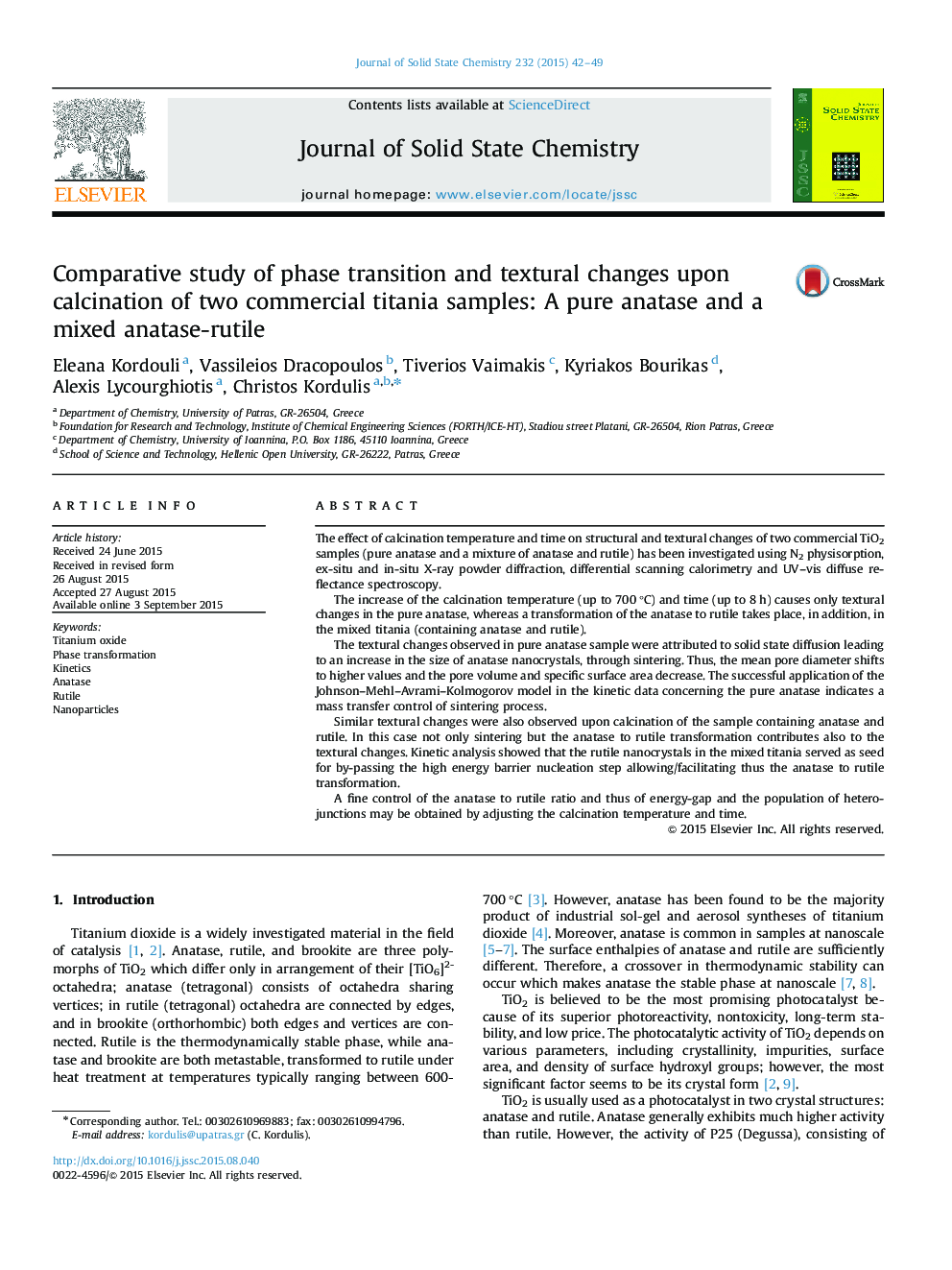| Article ID | Journal | Published Year | Pages | File Type |
|---|---|---|---|---|
| 1329432 | Journal of Solid State Chemistry | 2015 | 8 Pages |
•Increase of calcination temperature up to 800 °C and time up to 8 h causes only textural changes in pure anatase•Progressive transformation of anatase to rutile with time takes place in the mixed titania above 600 °C•A high activation energy barrier inhibits the solid state transformation in pure anatase•Rutile nanocrystals in mixed titania serve as seeding for favouring transformation•Calcination temperature and time allow a fine control of Eg and heterojunctions population in mixed titania
The effect of calcination temperature and time on structural and textural changes of two commercial TiO2 samples (pure anatase and a mixture of anatase and rutile) has been investigated using N2 physisorption, ex-situ and in-situ X-ray powder diffraction, differential scanning calorimetry and UV–vis diffuse reflectance spectroscopy.The increase of the calcination temperature (up to 700 °C) and time (up to 8 h) causes only textural changes in the pure anatase, whereas a transformation of the anatase to rutile takes place, in addition, in the mixed titania (containing anatase and rutile).The textural changes observed in pure anatase sample were attributed to solid state diffusion leading to an increase in the size of anatase nanocrystals, through sintering. Thus, the mean pore diameter shifts to higher values and the pore volume and specific surface area decrease. The successful application of the Johnson–Mehl–Avrami–Kolmogorov model in the kinetic data concerning the pure anatase indicates a mass transfer control of sintering process.Similar textural changes were also observed upon calcination of the sample containing anatase and rutile. In this case not only sintering but the anatase to rutile transformation contributes also to the textural changes. Kinetic analysis showed that the rutile nanocrystals in the mixed titania served as seed for by-passing the high energy barrier nucleation step allowing/facilitating thus the anatase to rutile transformation.A fine control of the anatase to rutile ratio and thus of energy-gap and the population of hetero-junctions may be obtained by adjusting the calcination temperature and time.
Graphical AbstractDependence of anatase content of P25 on the calcination temperature (600 °C (■), 650 °C (●), 700 °C (▲)) and time.Figure optionsDownload full-size imageDownload as PowerPoint slide
